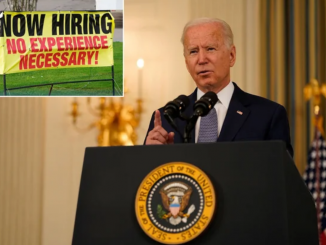
The New York Times quietly updated an explosive story about Capitol Police officer Brian Sicknick, who tragically lost his life after engaging with rioters who stormed the U.S. Capitol on Jan. 6.
What is the background?
On Jan. 8, two days after the deadly violence, the New York Times reported that Sicknick died after being struck in the head with a fire extinguisher.
The story, which was immediately circulated throughout the media as fact, was built on the flimsy account of “two law enforcement officials.”
“At some point in the chaos — with the mob rampaging through the halls of Congress while lawmakers were forced to hide under their desks — he was struck with a fire extinguisher, according to two law enforcement officials,” the Times reported at the time.
Then what happened?
New reports surfaced in early February indicating that Sicknick did not die from being struck by a fire extinguisher.
In fact, according to CNN, prosecutors are struggling to build a federal murder case in Sicknick’s death precisely because there is a “lack of evidence that could prove someone caused his death.”
From CNN:
Authorities have reviewed video and photographs that show Sicknick engaging with rioters amid the siege but have yet to identify a moment in which he suffered his fatal injuries, law enforcement officials familiar with the matter said. …
According to one law enforcement official, medical examiners did not find signs that the officer sustained any blunt force trauma, so investigators believe that early reports that he was fatally struck by a fire extinguisher are not true.
How did the Times respond?
The so-called “newspaper of record” quietly updated its story, retracting the claims about Sicknick being struck with a fire extinguisher, and added an editor’s note at the top of the story.
“UPDATE: New information has emerged regarding the death of the Capitol Police officer Brian Sicknick that questions the initial cause of his death provided by officials close to the Capitol Police,” the note reads.
The update came 10 days after CNN’s report stating that Sicknick did not die from blunt force trauma.
The Times’ story now states, “Law enforcement officials initially said Mr. Sicknick was struck with a fire extinguisher, but weeks later, police sources and investigators were at odds over whether he was hit. Medical experts have said he did not die of blunt force trauma, according to one law enforcement official.”
How did Sicknick die?
The Capitol Police said in a statement that Sicknick was “injured while physically engaging with protesters. He returned to his division office and collapsed. He was taken to a local hospital where he succumbed to his injuries.”
Investigators are reportedly exploring whether Sicknick became ill after coming in contact with a chemical irritant such as pepper spray or bear spray. Another theory is that Sicknick had a pre-existing condition that was exacerbated by engaging with rioters.
In fact, ABC News reported on the same day the Times made its original claim that “authorities believe Sicknick’s death was driven by a medical condition.”
Ken Sicknick, the brother of the fallen officer, told ProPublica that he spoke with his brother after the riot.
“He texted me last night and said, ‘I got pepper-sprayed twice,’ and he was in good shape,” Ken Sicknick said. “Apparently he collapsed in the Capitol and they resuscitated him using CPR.”
*story by The Blaze


